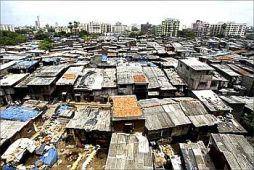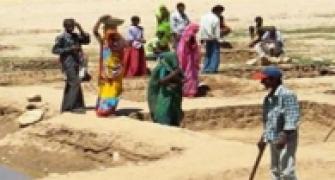 By 2030, 590 million Indians will live in cities, a number that's twice the population of the United States; between 700 and 900 million square metres of commercial and residential space needs to be built up, that's a new Chicago every year; 7,400 kilometres of metros and subways will need to be constructed, a number that's 20 times the capacity added in the past decade.
By 2030, 590 million Indians will live in cities, a number that's twice the population of the United States; between 700 and 900 million square metres of commercial and residential space needs to be built up, that's a new Chicago every year; 7,400 kilometres of metros and subways will need to be constructed, a number that's 20 times the capacity added in the past decade.
The list of jaw-numbing numbers goes on.
A path-breaking study by McKinsey Global Institute of how urban India will look in the next two decades is both a source of inspiration and despondency.
Investment opportunities are obviously great. According to the McKinsey estimate, an investment of $1.2 trillion is required in terms of capital investment.
If the necessary investments are not made and, far more important, the correct changes in governance models not done, urban India could see the greatest squalor of all times -- and don't forget that, as opposed to 28 per cent in 2001, over 40 per cent of India will be urban by 2030; in the case of states like Tamil Nadu, Gujarat, Maharashtra, Karnataka and Punjab, this number will be greater than 50 per cent.
Water supply levels, in a business-as-usual scenario, could fall from an average of 105 litres to only 65 liters a day; slum population will balloon from 17 million to 38 million; peak vehicle density will rise to 610 per lane kilometre against the
benchmark of 112.
In other words, cities which will account for 70 per cent of gross domestic product, as compared to 54 per cent in 2001, will be a larger version of Dharavi.
Not surprisingly, the McKinsey list of recommendations talk of empowered mayors (several Indian cities will be larger than major countries today) and even an independent revenue stream for cities (China gives cities a 25 per cent share of
value-added taxes), apart from several major reforms in the governance structure of cities.
The critical question here is whether India's politicians will allow this to happen -- the complete lack of concern over the future of Hyderabad in the ongoing fight for Telangana is a pointer to how India's politicians are more worried about
rural voters even though the lion's share of GDP comes from cities.
To some extent, a greater urban population should force politicians to pay more heed to the needs of urban India, but it is by no means certain - why else would Mumbai have a Dharavi?
A related concern is that of how this urbanisation is to be funded. McKinsey citesexamples of how a large portion can be funded by leveraging existing land resources -- the $22 billion development in Mumbai using land sales in Bandra-Kurla is one such example -- but land deals, in the past, have been the source of great corruption.
Given the much greater need, and compressed in time, the scope for corruption makes the mind boggle. How India tackles issues such as these will decide whether, in two decades from now, 40 per cent of the country's population lives in Shanghai-like surroundings or in Dharavi-like environs.









